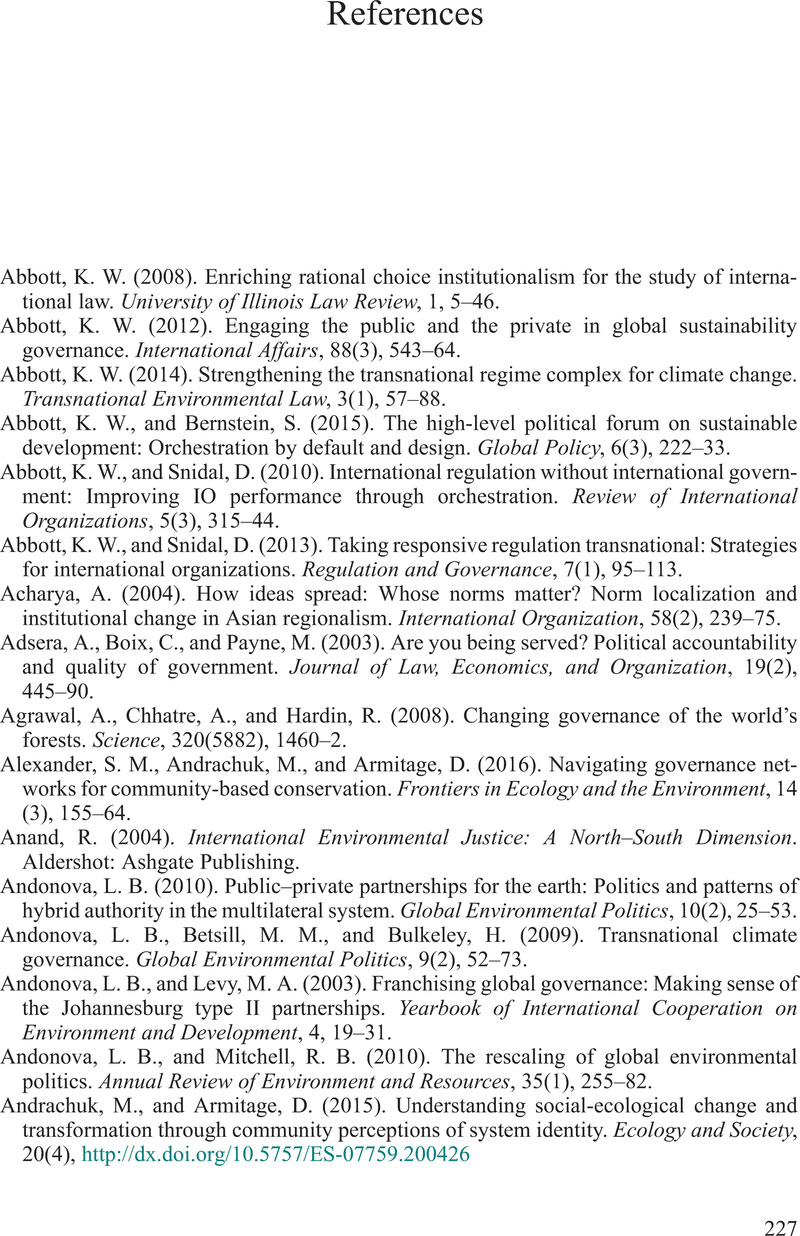Book contents
- Agency in Earth System Governance
- Series page
- Agency in Earth System Governance
- Copyright page
- Contents
- Contributors
- Acknowledgments
- Part One Introduction and Overview
- Part Two Agency and the Dynamics of Earth System Governance
- Part Three Policy Implications and the Future of Agency in Earth System Governance Research
- Appendix ESG–Agency Harvesting Database
- References
- Index
- References
References
Published online by Cambridge University Press: 04 January 2020
- Agency in Earth System Governance
- Series page
- Agency in Earth System Governance
- Copyright page
- Contents
- Contributors
- Acknowledgments
- Part One Introduction and Overview
- Part Two Agency and the Dynamics of Earth System Governance
- Part Three Policy Implications and the Future of Agency in Earth System Governance Research
- Appendix ESG–Agency Harvesting Database
- References
- Index
- References
Summary

- Type
- Chapter
- Information
- Agency in Earth System Governance , pp. 227 - 258Publisher: Cambridge University PressPrint publication year: 2020

